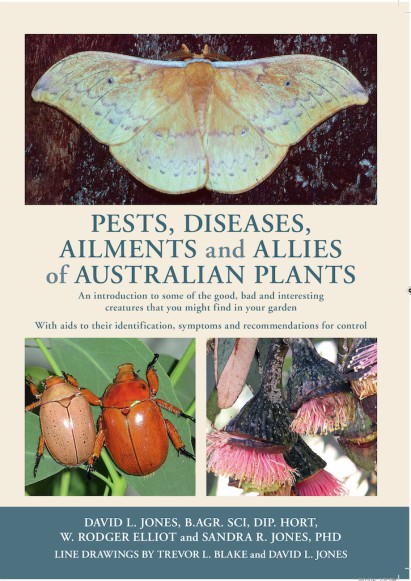 This amazingly comprehensive book is full of beautiful photographs and detailed information about the good and bad bugs and diseases in our gardens. Although focused on Australian plants, many of the insects described are also relevant to exotic species including edible plants. Although chemical and organic approaches to the pests and diseases are given, the authors’ clearly tell us their preferences lie in creating a balanced natural environment, and add that they ‘hope the book assists readers to recognise the wondrous diversity in their gardens.’
This amazingly comprehensive book is full of beautiful photographs and detailed information about the good and bad bugs and diseases in our gardens. Although focused on Australian plants, many of the insects described are also relevant to exotic species including edible plants. Although chemical and organic approaches to the pests and diseases are given, the authors’ clearly tell us their preferences lie in creating a balanced natural environment, and add that they ‘hope the book assists readers to recognise the wondrous diversity in their gardens.’
In the introduction they also point out that most of the insects and small invertebrates that we find in our gardens are harmless to us and our plants. Accurate identification is essential if we are going to be able to deal with pests in the least harmful way. I will be using the book to learn about what is in my garden and about their life cycles and what, if anything, I need to do. At the very least every gardener should make an effort to become familiar with beneficial insects, so that we are not killing them by mistake.
In the Prelude there are useful starting points on the road to identifying a problem. These are a list of Symptoms and Recognition Features of Pests, Photo Short Cuts, and a Pest Control Table. With its depth of scholarship and knowledge, and wonderful accurate photographs, it is cheap at $45
By David Jones, Rodger Elliot and Sandra Jones, Reed New Holland, 2015, paperback with PVC cover, 448 pages, $45
